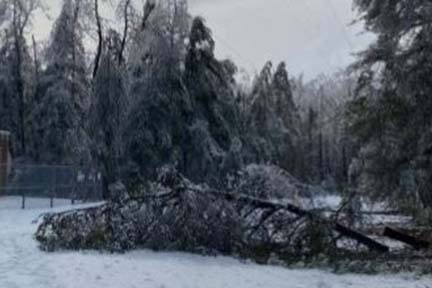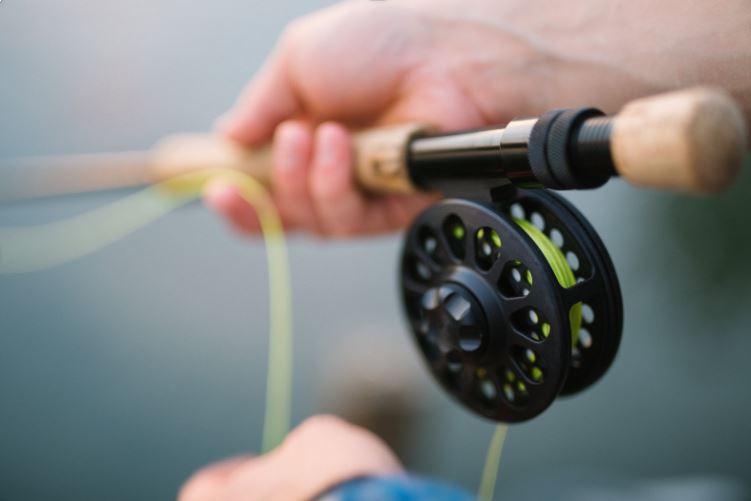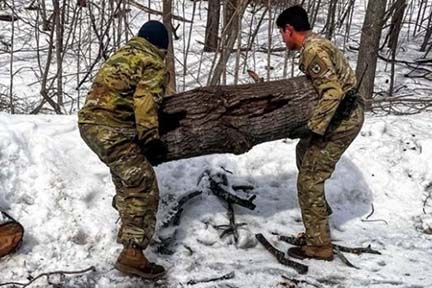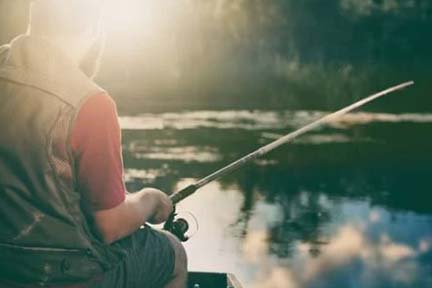 April 3, 2025 April 3, 2025
DNR contacts: Patrick Ertel, 989- 370-1163 or Kathleen Lavey, 517-930-4218
DNR, Michigan National Guard work together to clear vital areas of fallen trees
Sawdust was flying at sites across northern Michigan as Department of Natural Resources and Michigan National Guard crews worked together to clear vital areas of trees downed by the massive weekend ice storm.
Of the more than 600 service members currently activated, approximately 130 are teamed up with Michigan DNR staff across the 12-county area hit hardest by the storm that stretches across the northern tip of the Lower Peninsula and into the southern tip of the Upper Peninsula.
“We appreciate the Guard’s cooperation and help,” said Jeff Stampfly, Michigan’s state forester and chief of the DNR’s Forest Resources Division. “There is a lot of work here to be done.”
Paul Rogers, DNR fire prevention specialist, was working with the chain saw crews and said they had cleared miles of roads Thursday in Emmet County.
“They’re doing well and making progress,” he said. Rogers shared that the devastation was hard to describe.
“There are areas where there is not much damage, and there’s an area where there is a 70-foot pine that looks like a toothpick sticking up, with every branch taken off of it,” he said.
The storm downed trees across the area, leaving some forested areas looking like they had been mowed. The storm blocked many roads and knocked out power to thousands of homes. Gov. Gretchen Whitmer declared a 10-county disaster area on Monday which was later expanded to 12 counties, including Alcona, Alpena, Antrim, Charlevoix, Cheboygan, Crawford, Emmet, Mackinac, Montmorency, Oscoda, Otsego and Presque Isle.
Guard members and DNR staff met for a briefing early Thursday morning before heading out to clear critical areas such as roads and access to communication towers. Among them was service member Laconey Spencer of Detroit. Having been through a chain saw safety review the night before, led by the DNR, Spencer was ready for his assignment.
“There is a lot of debris to be picked up,” Spencer said. “We want to do what we can to help.”
Please avoid traveling any backroads or trails as cleanup continues to allow for crews to complete their work. Additionally, cracked or broken branches still hanging in the trees could fall without warning.
For an up-to-date list of state parks and trails that are currently closed, go to Michigan.gov/DNRClosures.
Are you in the ice storm area? Learn more about resources.
Note to editors: An accompanying photo is available below for download. Caption information follows.
- Storm cleanup: Michigan DNR staff and members of the Michigan National Guard teamed up Thursday to clear roads across the 12-county area hardest hit by this week’s ice storm. This team is working in Emmet County near the community of Brutus. (Photo credit Michigan National Guard)
|










